Florence’s Museo Galileo, founded on May 7, 1925, as the Institute of the History of Science, is 100 years old this year, and several initiatives are planned to mark the centennial. We took the opportunity to speak with director Roberto Ferrari (Taormina, 1981), who will lead the institute in the role of executive director from 2021. What purpose does a museum serve today? How can it be a point of reference in the debate? How can it help young people? Why is it important for museums to invest in research? We discuss these issues with the director in this interview by Federico Giannini. With some examples of how Museo Galileo works.
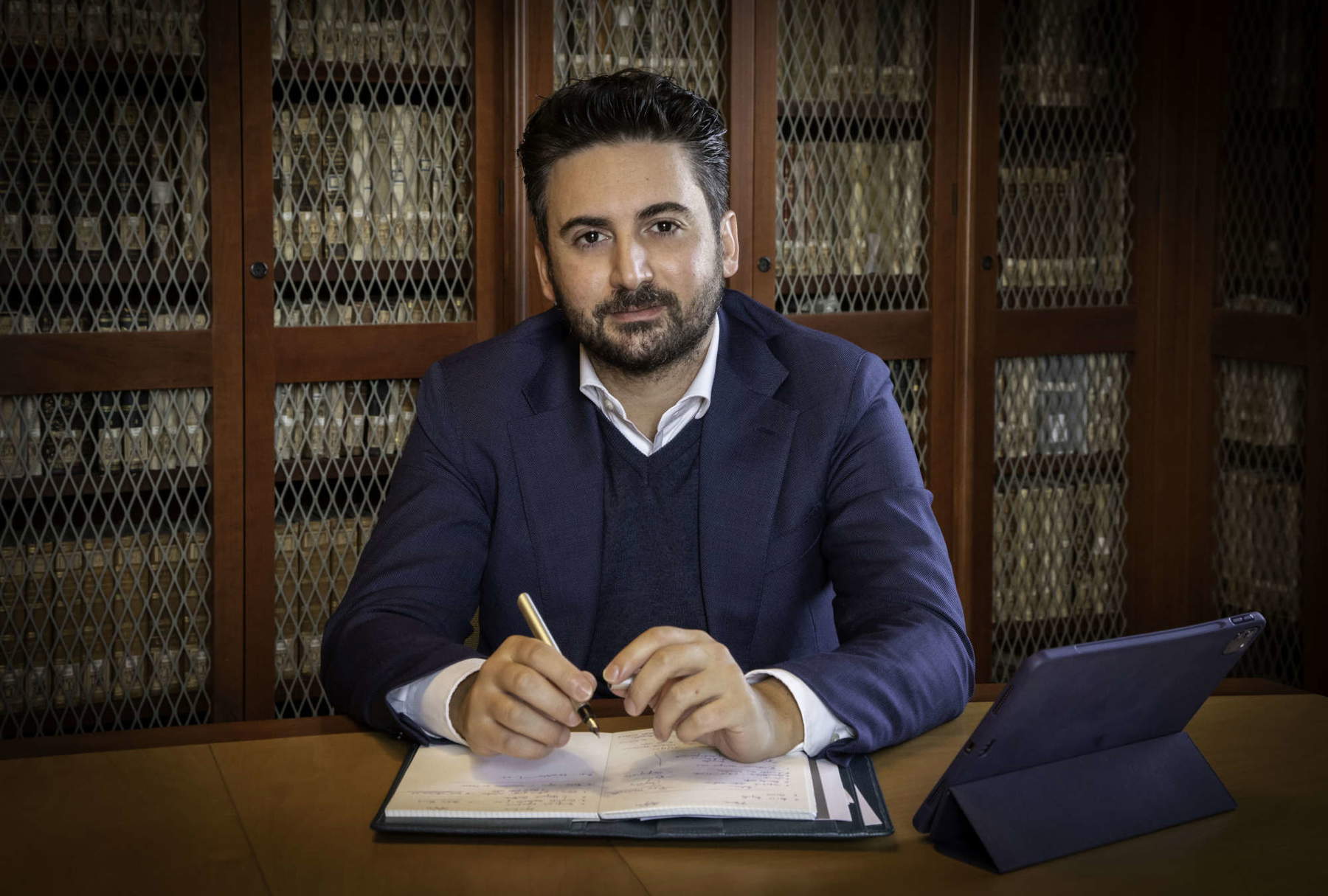
FG. This year we are celebrating the centenary of the Museo Galileo, and among the goals that the institute gives itself there is one that I think is very interesting and very ambitious: to enhance the position of Florence in the history of science. It also means, after all, working on public perception. How do you intend to work to achieve this goal, this relocation of Florence in the history of science?
RF. This is an effort that was born when already Andrea Corsini since 1922 has been cultivating the purpose of giving value to the history of science through the instruments that had ceased their useful life and yet could continue, according to him, to inspire the work of historians and scientists, also constituting a bridge between the two knowledges. Today we are engaged on this mission in several ways. One is to make people understand how much even of Florence’s artistic culture, which is obviously much better known than the city’s scientific culture, owes to the ideas, characters and inventions of the history of science. It is unthinkable to appreciate Brunelleschi’s dome without questioning the apparatus of technical-scientific knowledge that was behind it, just as it is unthinkable to appreciate and understand the work of Galileo without recognizing that in Galileo coexisted the figure of a scientist and that of a scholar (as Calvino would say in a famous article in 1967) and also that of a skilled draughtsman as Primo Levi writes in that beautiful poem dedicated to him, Galileo was “a learned man but of shrewd hands.” I actually find the challenge of trying to reconnect those links that have been broken in the disciplinary specialization that, especially between the eighteenth and nineteenth centuries, constituted the general trend line very fascinating. So our work is, on the one hand, to bring together and reconnect these different trajectories and to show how works often ascribed to one side or the other in truth are the fruit of work that brought together different forms of knowledge, and on the other hand also to make known the contribution that the city, and then Tuscany and the whole country, made to the history of science, outside of of of course questions of national identity: this is a very important contribution that certainly until the Galilean era was universally recognized. One of the most fascinating aspects that we always try to highlight, although this would then require other expertise as well, is how much scientific culture also inspired good governance, that is, how close the closeness between the scientific world and the political world was. For years we have been talking about evidence-based policy, that is, policies based on knowledge and evidence. It is something that is not without risk when one believes that science provides all the answers one needs. That is not the case, and the history of science also helps to see in the right light the scientific contributions themselves, which are based on fallibility and the fact that of course any scientist must also recognize the limitations of his or her hypotheses, as in a way Galileo taught us to do.
In order to deal with this kind of work, which requires, I would say, a multidisciplinary approach, and therefore brings together various skills, you cannot work only on the physical level, but you also need to go digital. How then do you think a museum should work on digital?
The awareness of the potential of information tools in the service of the museum was born here with the direction of Paolo Galluzzi, who already in the mid-1980s decided to start a multimedia laboratory. The laboratory had the ambition, with the means of that time, to work on the two main fronts of digitization, which are still a constant mission for us today. The first is the study of sources: going in this direction are the development of display cases, the first of which was the Galileoteca, so environments built for research, where it is possible to locate all the useful materials, and which are also aimed, however, at a lay audience. Digital editions of ancient texts and ancient maps, such as Martin Waldseemüller’s planisphere, have also developed along these lines. It is therefore a matter of making objects accessible, understandable and appreciable even in the digital environment and, above all, using the digital not for special effects, but to improve the avenues of research and knowledge. The second front is that which concerns instruments: all scientific instrumentation since the 1980s has been the subject of a continuous analysis aimed at understanding how new forms of visualization could help this front of activity, which we can call machine philology and which obviously has the ambition of continuously studying scientific instruments with the aim of exploring their functions, cultural context, and relationships in ever more accurate ways this ideal chain that binds inventions of scientific instruments, which is anything but linear. In this case, digital means, for example, 3D modeling and the recreation of digital environments within which to place digital objects: a very recent case in point was the creation of a digital twin (though that is a misnomer) of the Sala della Guardaroba in the Palazzo Vecchio. As part of a project with the Municipality of Florence and Friends of Florence, we then also created, with our multimedia laboratory, a digital reproduction of Ignazio Danti’s globe, which can therefore be explored without, of course, putting a strain and stress on the original (and it was been possible in this reconstruction to also bring out those design elements of Vasari’s that can no longer be seen, such as the stagecraft effects of the globes coming out of the ceiling, or, as imagined, the coming out of the cupboards of the clock of the planets). The idea, however, is to create instruments that are also easily usable.
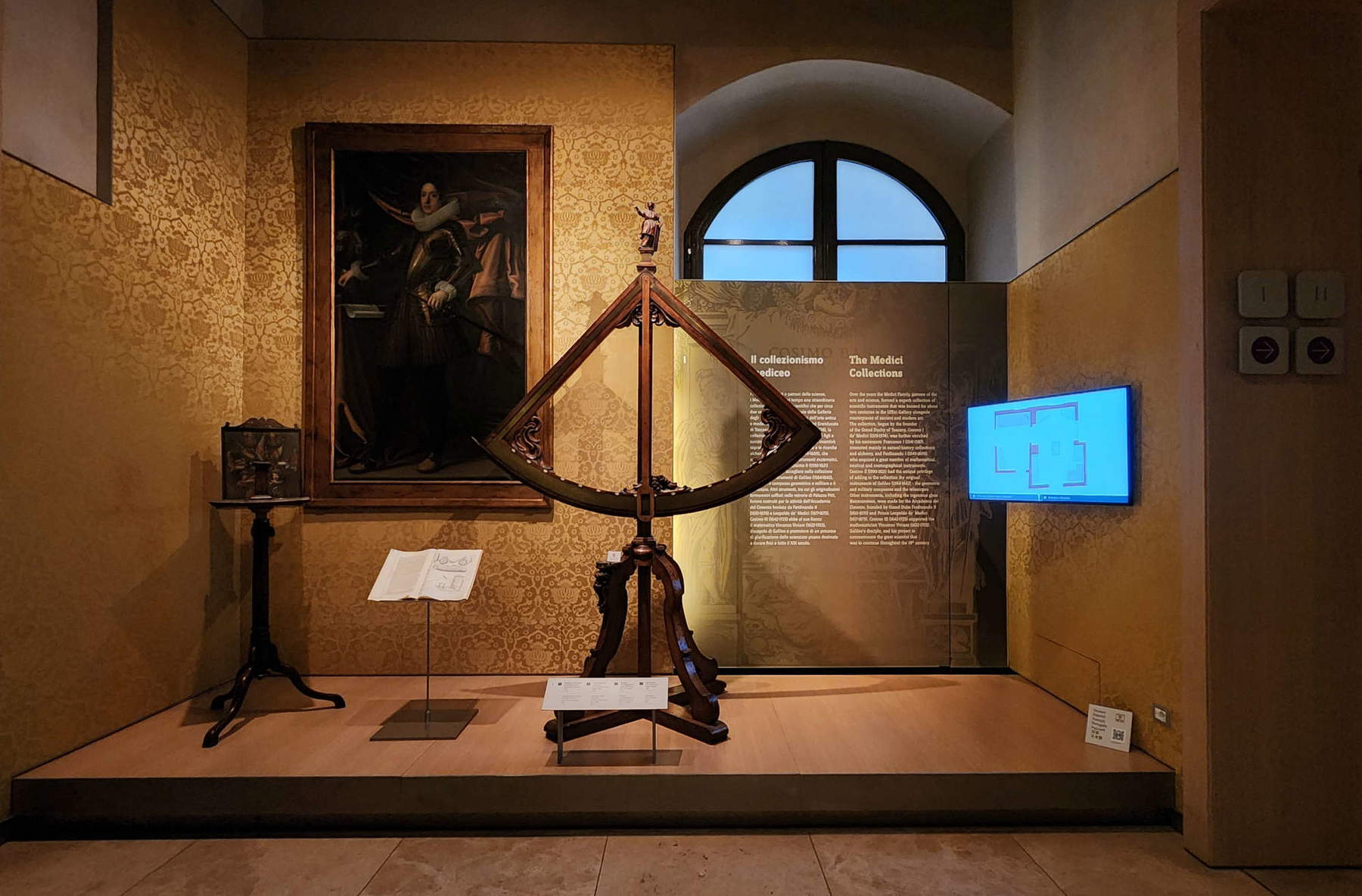
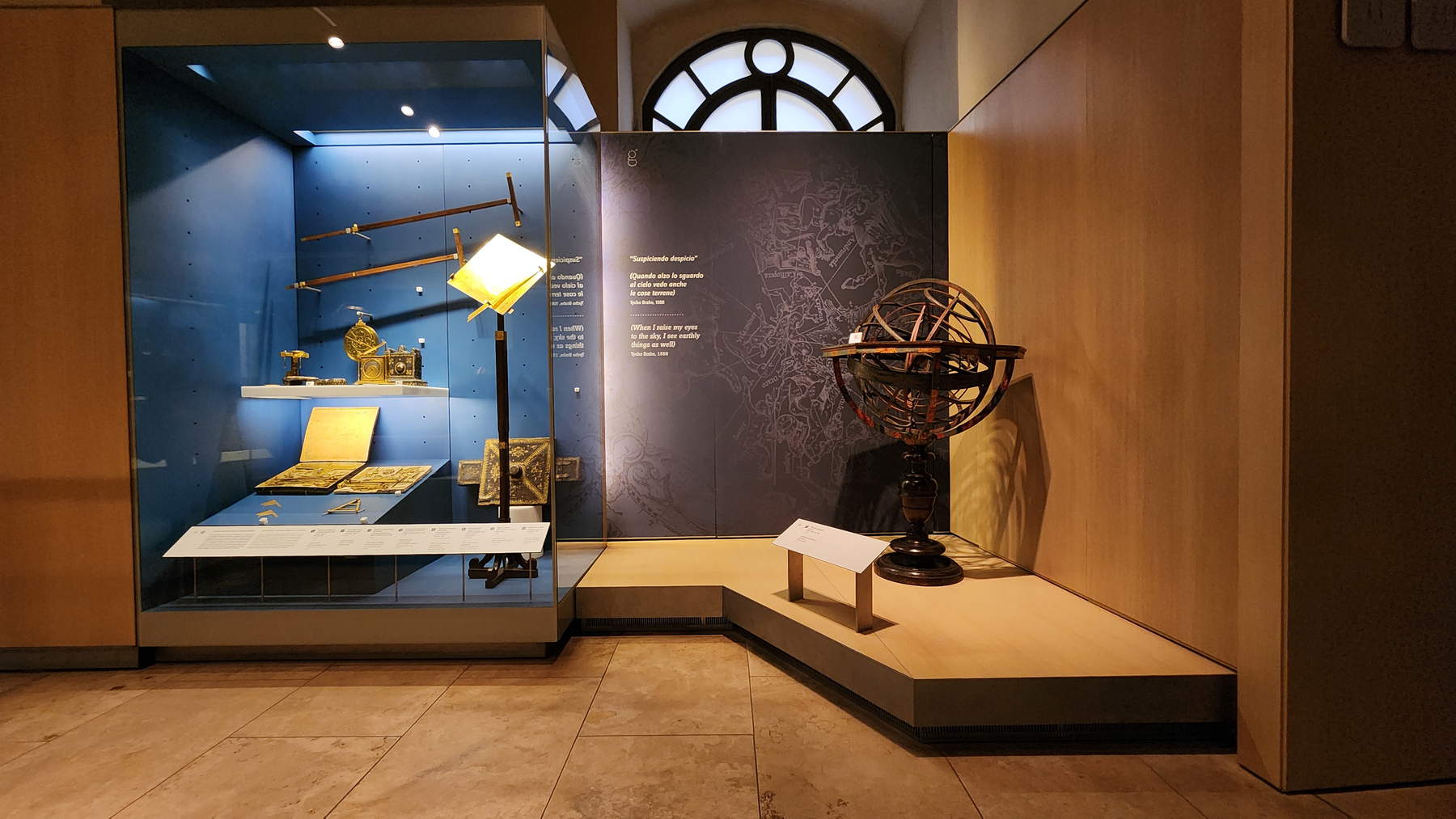
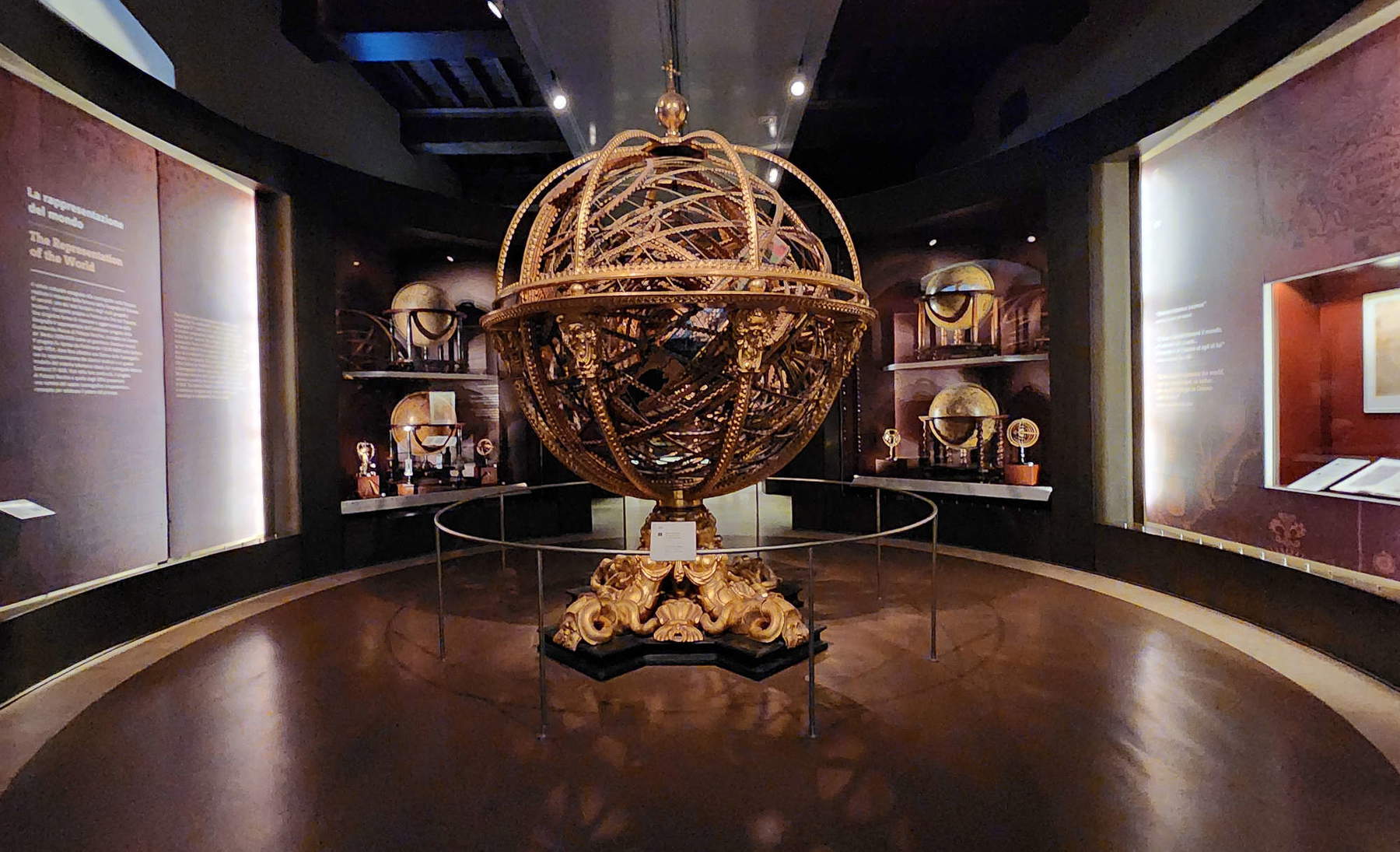
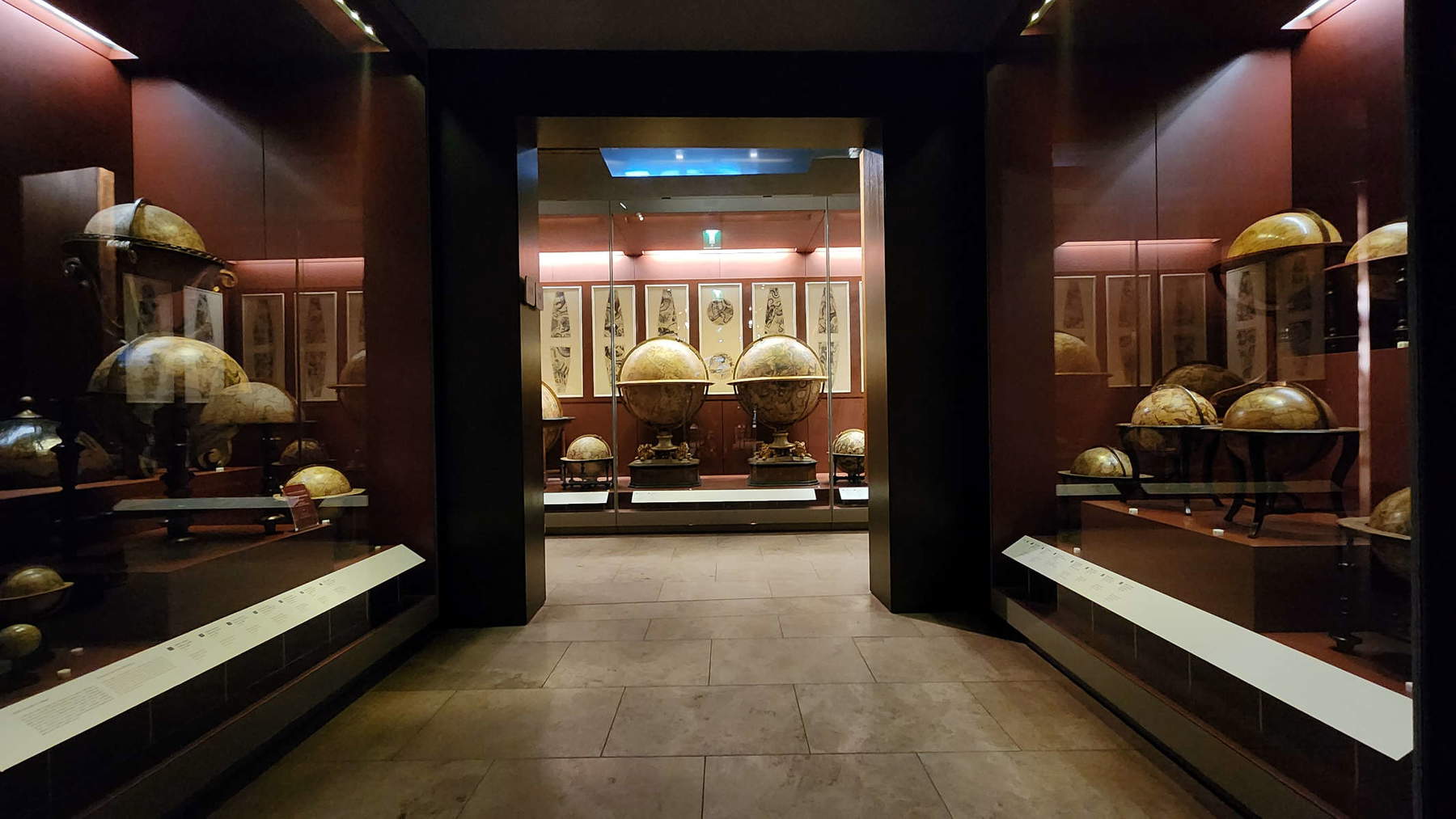
So let’s talk about research, an area in which Museo Galileo intervenes with several activities, the latest of which is a virtual reality project, available daily to the public in the museum’s halls through visors that everyone can wear, carried out with a spin-off from the Normale di Pisa. Beyond that, however, I would be interested to know how the museum approaches research, what relationships it has with universities, and then, since the museum is embedded within a system, whether museums do enough in this regard, that is, whether they have strong enough relationships with all of academia and whether really research is still a goal of museums or whether, in recent times, it has been somewhat left aside to focus instead on other goals, perhaps of more immediate achievement and also of more immediate effect...
I would go so far as to say that if today more than 200,000 people a year enter a museum of scientific instruments, sometimes very difficult to read, it is due to the fact that these objects have found a voice in those who have studied them, that is, in those who have devoted part of their professional lives as scholars to making it clear that in those seemingly useless objects, reminders of old times, there was instead a story hidden that still deserves to be told, and thus that in some way these objects functioned as classics that continue to have their value even in orienting us in the questions we ask today. If I have to summarize the contribution of research, I also see it in this ability to give form to something that was not there before, because objects are dumb or, to borrow a famous definition of Argan from 1975, they are not cultural goods, but they are objects of knowledge, objects of scientific research, and they are insofar as someone is put in a position to do research, which is a real issue. We do research with scholars-in-residence, museum employees, but we also collaborate with outside scholars. The museum has a dense network of collaborations, more than 100 agreements between universities and cultural institutes that allow us, of course, also to cover those areas that we don’t cover with in-house scholars, and they also allow us to go in the direction of those necessarily interdisciplinary works that often require the involvement of specialized figures. Among the reasons that inhibit, I think, in general, the research efforts of Italian museums is the difficulty of most museums to have a horizon of resources, and therefore also of programming, that allows them to cover the necessary needs, and therefore to be able to make use of scholars who are committed to the study of collections. It seems to me, however, that there is less and less attention from the entities that are constitutionally committed to the preservation and development of museums, such as the Ministry or the regions, which should be involved in this project, also taking advantage of the ideal platform of the National Museum System, and unfortunately in this sense we cannot fail to register some signs, starting with the demise of the Directorate General for Education and Research, which with the recent reform was been de facto abrogated, and also with the limitation that it seems that the season of linking the two ministries that also experimented in the past years with joint working tables (I am referring to the Ministry of Culture, as it is now called, and the Ministry of Education, University and Research, now divided into two different ministries) has somewhat faded away. So unfortunately there is, besides a physiological limitation that comes from the structural weakness of museums, also in my opinion the fact that museums have been less and less stimulated to do research. And this is obviously a serious issue. And then of course it’s also up to the choices also of those who run the institution.
And this is a political issue.
Of course. I think the fact that we often have short-term appointments of museum directors can lead even the best directors to aim for short-lived initiatives because they produce their effects in two or three years. Research does not: of course, unfortunately or fortunately, it has a longer time frame.

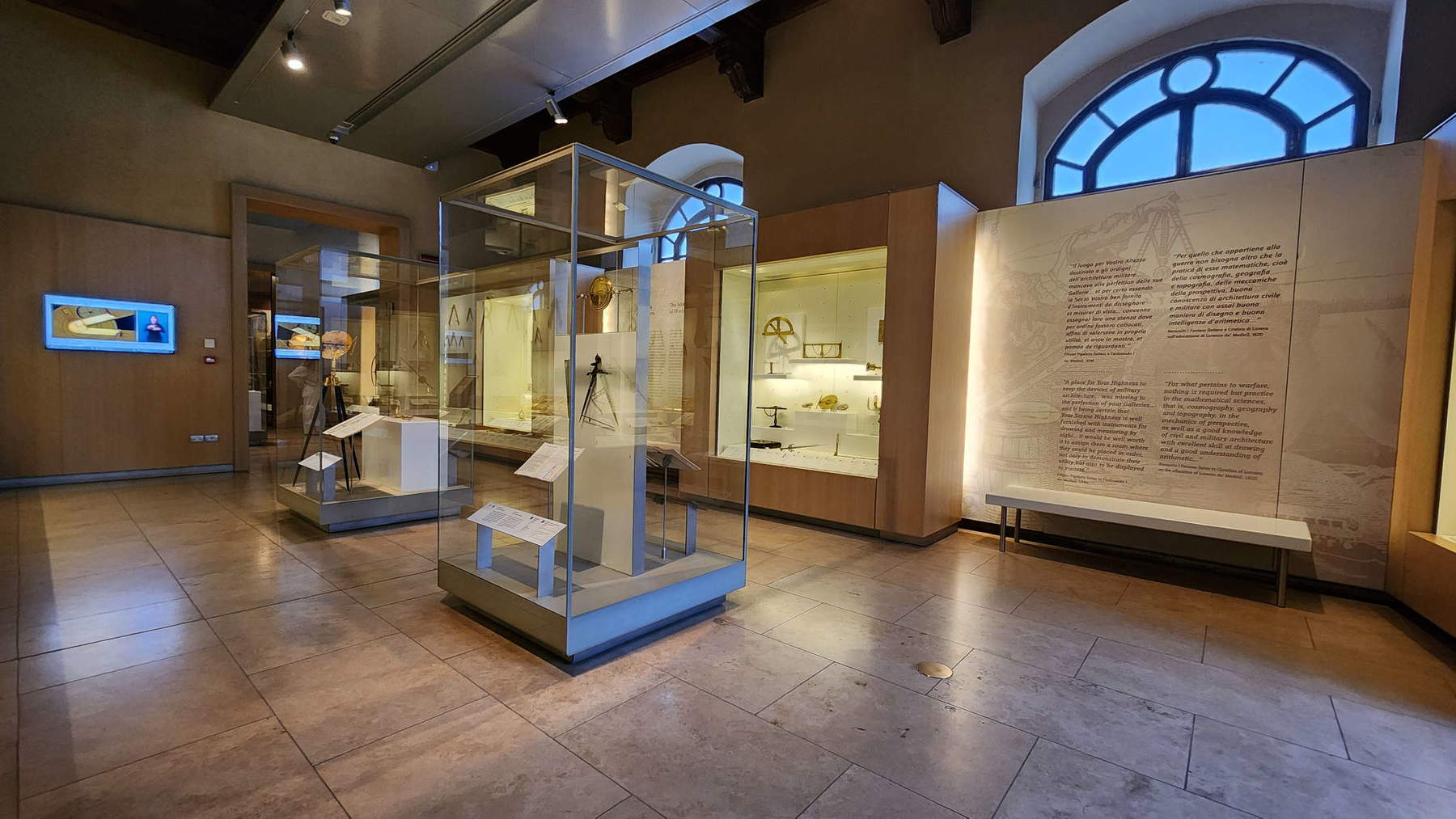

Earlier you mentioned the National Museum System, and I’d like to know one of your opinions on how it is working today: whether this system that encompasses Italian museums could be improved, whether it is going well, what could be done
Let’s say that the gestation of the National Museum System, as envisioned by Ministerial Decree 113 of 2018, has been very laborious for various reasons, not the least of which is the fact that a lot of time was spent even on the identification of those minimum requirements that were also clearly expressed in the decree and that were supposed to be a necessary condition for admitting to accreditation the museums that were being evaluated. This in my opinion led to a delay that has only partly been recovered, and only on one line of work, which was the systemization through the Musei Italiani application. That is a line that has had its own development that we see, because it is a platform on which more and more museums are present and which has also begun to provide services, so even allowing ticket sales, and that can only be a positive thing. But there remains a huge commitment to be made on what was perhaps the main promise of the National Museum System, which is to be a system capable of evaluating, and therefore with the courage to be able to say yes and no. And that is a courage that has to mature as a culture within the offices that then shape that commitment. In order to get to being a competitive and cooperative system, there is one point that I think is still missing, unfortunately: hooking the systems of programming resources (and therefore funding for museums) to the museum system, that is, to the accreditation system that is hinged on the National Museum System. As long as there is a disconnect, or even a contradiction between the rules for funding museums and the National Museum System, we will unfortunately go nowhere: those who give money to museums, that is, the state and the regions, must really believe in the value of the National Museum System and must therefore anchor the funding criteria to compliance with those criteria and thus, first of all, with the minimum requirements, and then with the quality levels, as they are called in the name of the decree. The gist of it all, though, is that museums should be placed side by side on a path that sees them grow. Without a strong linkage between resource planning systems and the National Museum System we will miss the fundamental promise we have been carrying since the 2001 policy act.
Insisting on the issue of museum management: I would like to make a lunge on one particular issue, that of the qualities of a museum director. There has been in recent years, and from time to time it resurfaces, a heated debate, one of the most animated, about the characteristics that a museum director should have. Since the Museo Galileo, also from the point of view of governance, has a particular set-up, I would like to ask you whether this debate pitting “managers,” let’s call them that, against technical figures is, in your view, an idle debate, or is it a useful one: what position do you have on this issue?
I think it is a debate that deserves to be carried on, and carried on in a way that also enhances all that knowledge that is in practice and is in the literature that exists on these issues. So it would be a shame to waste it in a kind of debate of ideological stances. I think there is, in the meantime, a fundamental distinction to be made between museums that are required by statute and by configuration to find funds because otherwise they don’t survive, versus public museums that do have funds or should have funds, and so they certainly require to have a focus on the use of funds, especially when it comes to public funds, but it is clear that you need figures who are able to find funds and then also question how a museum can get external funds. Spending public money well is a very complex thing, but even more complex is spending money well and finding it. Truly autonomous museums, those that absolutely have to break even at the end of the year, have to do so no matter what, because otherwise the conditions are created for a crisis that produces, in the medium term, an extinction. Then of course the needs can be solved by various kinds of organizational arrangements. I am of the opinion that there should be different competencies within each museum. I am not so convinced that the direction given to a figure who is a specialist in the collection or subject always solves all the issues, unless we are dealing with small collections that can be dominated by one person. I see this in our case: even though there is a figure of a competent scholarly director, this figure is mainly competent on one part of the collection, so having a community of scholars is a fundamental condition. I think, however, that perhaps the most critical aspect of the answer I am trying to give is that unfortunately the whole discipline that has come to be formed in the last 30 years of so-called economics and management and culture has disappointed expectations. I believe that much of the controversy and pollution of the debate stems from the fact that the management of culture, in my view, lives by abstract formulas and lives in a kind of abstoric glass bell. In my experience, I have realized that the tools that are supposed to be applied to the cultural sector (from organization, management, business economics, and so on) are often applied uncritically and with very bad results, and therefore I think that the study of collections, the study of the cultural relations that link a collection to the institution and the institution to its context are a fundamental prerequisite for building a managerial vision of cultural institutions, which instead has usually been unfortunately lacking. I am referring to having imagined that management is only fundraising, is only an accounting issue, or that it is only talking about strategic plans, which were often written in vain and also made by institutions that were not even able to ensure a balanced budget, but looked at an ideal world without a method, without careful research of sources. I think that unfortunately the debate became polluted because of a limitation of the community to which I also refer: if museums are to be research centers that also have the ambition to transform the people who enter that place, then market logic is not enough. If, on the other hand, we imagine that the museum is just a container of objects in search of an audience, then just put a business there. As in fact happens, because just look at the way the term museum is often misused given, and that concerns me more than the debate about the nature of directors. These are skills that are all needed, as long as we talk to each other, as long as we understand each other, because there is no good organization that has not been formed around the projects, the research projects, the knowledge projects that the museum carries out, and there is no good research and knowledge project that does not come to terms with the organizational and economic characteristics and constraints of each museum.
Instead, let’s talk about the museum’s audience. The Museo Galileo exceeds 200,000 visitors each year, and those are big numbers for a museum dedicated to the history of science. I would like to know who your audience is, that is, how many tourists there are, whether there is a prevalence of young people, not so young people, in short, how the flows are composed that give rise to these more than 200,000 visitors who come to visit every year.
We have two sources of information: one is the data that we get from the sales channels, and the other is the questionnaires that we administer with, of course, the limitation that the questionnaire gives you a representation, even a very accurate one, of the respondents only, so they are obviously a part of the statistical population. From these two sources we have inferred that about 60 percent of our visitors are tourists who are here in Florence to basically tour the city, and 40 percent are citizens instead. And they are mostly Florentines, Tuscans. We have an audience that is predominantly made up of Americans, which obviously raises an issue of multilingualism: the museum is organized to offer all the communication apparatus (the website, the apps, all the multimedia products) at least in Italian and English. And it also emerges from the questionnaires that the museum’s audience is made up of people in the 28-45 age group. This is the group that is most present. We then know from the questionnaire that they come in couples: a curiosity that frankly amazes me too, however it is stable every year, is that the largest slice of the audience is made up of 35-year-olds who come in couples, so the Museo Galileo is a kind of love museum... ! Of course, we have a big slice of school audiences because we have an in-house educational education group, with whom we do about 1,500 workshops a year, and the share of organized groups is a little over 20 percent (around 25,000 visitors who come with groups, with experiential tours, as we call them here, and guided tours).
Talking about the Italian audience, and in particular the young audience. In Italy there is a certain reluctance towards science subjects. We are well below the European average of graduates in STEM subjects (according to Eurostat data), and moreover it is a field that suffers from a strong gender gap because female graduates in the field are roughly half the number of males, according to Istat data that note a 16.6 percent share of females (in the range of Italians between 25 and 34 years old with a tertiary degree) who have a STEM degree compared to 34 percent of males, a situation that is then also reflected in the employment field. And all this despite the fact that INVALSI tests certify that our younger students (middle school, high school) have skills that are actually more or less in line with those of their European peers. So I ask a couple of questions: do you find with your daily activities some kind of difference in approach or interest between adults on the one hand and the young and very young on the other hand? And does a museum like yours have the tools to intervene in a scenario like the one I have summarily described?
This is a very important issue because obviously the scientific disciplines are also those with which a country’s ability to not be subjected to technological developments, but to lead them, is most associated. We are convinced, meanwhile, that within the great world of scientific disciplines there continues to be a need to support basic research, which, as has been shown in many cases, is crucial precisely to enable that part of science that then fuels any applied development to be united as well, and also because this obviously enables some disciplines that are typically excluded from STEM reasoning to be brought together (although this aspect is fortunately changing in recent years: a historical awareness, a cultural awareness of scientists also greatly improves, overall at the system level, the ability of our youngest citizens to impact and also achieve professional satisfaction). The issue has many reasons for its complicated situation today. One is obviously the country’s low level of investment in scientific research because of a prejudice that probably goes back as far as Croce: perhaps we have not yet managed to overcome that cultural barrier. Then it is necessary to question not only the quantity of funding but also the quality of the research infrastructure, which of course in Italy has so many excellences. We measure it on the issues that we know best: we could say, simplifying, that perhaps the Museo Galileo has created, for example, a library like the one it has created because in the universities it was struggling to create it. It has created a series of formats and research projects that inside universities not only struggle to create, but struggle to maintain. This is because of a project culture that, unfortunately, may have had some results and positive outcomes, but if it is not accompanied by a culture of institutions, it risks having a continuous production of projects that then die and do not produce all the effects that they should also produce. This is to say that even the history of science understood as a bridge between the humanities and the scientific disciplines, from our point of view (and there are so many interesting cases that tell the story), can improve things. It is a small contribution, I realize, but it can also help to make people understand, to bring them closer together, and we see this in our teaching workshops. Many children who claimed to be distant from science subjects then discover that behind the history of those science subjects, behind the instruments, behind the characters, there are stories that are much richer than what one typically expects. It’s like in the example of Galileo, who certainly was a visionary scientist and able to create objects and imagine others as well that arouse interest, however, he was many things at once: when he returns to Florence he claims to be called a philosopher before he was a mathematician, and so he makes it clear how in truth knowledge then can come together. And it is probably also one of the ways to bring young people closer to scientific subjects.
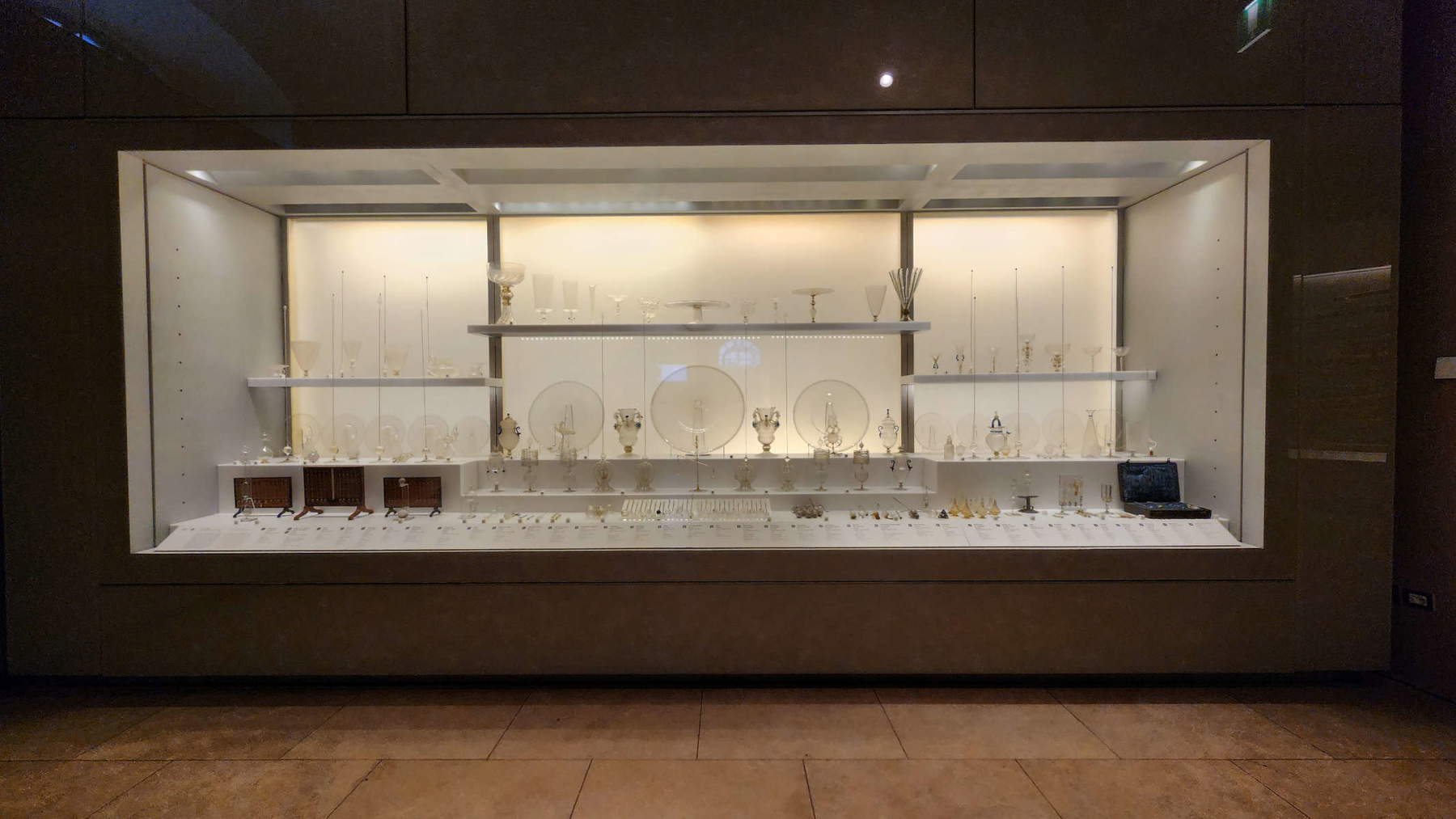
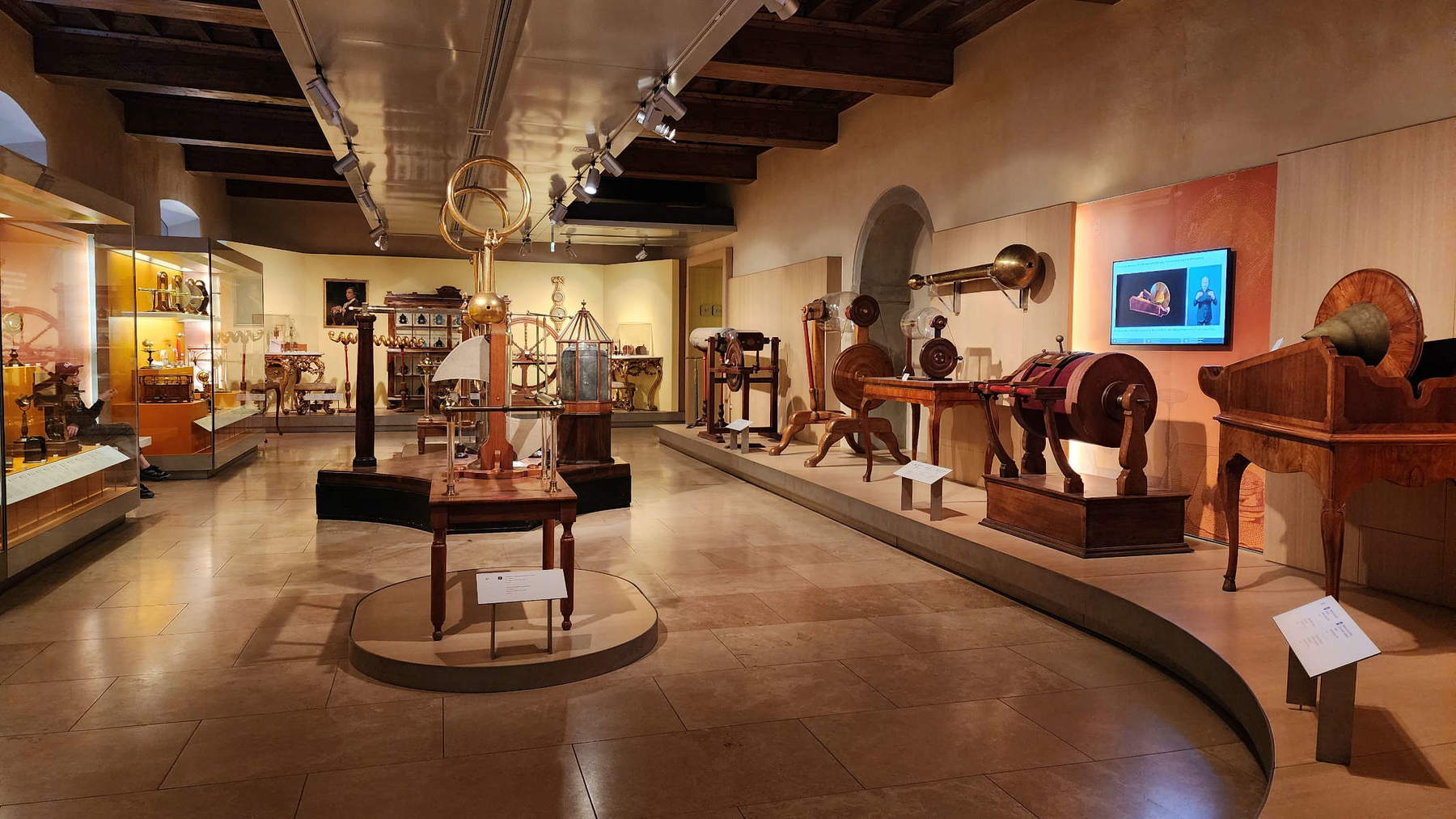

Incidentally, science is talked about all the time today. Just think of the political debate as well. To issues like sustainability, artificial intelligence, climate change. What does an institution like the Museo Galileo, dedicated to the history of science, need to do to stay in the piece in this debate? Put brutally: does it need to take a stand, to do information, to do outreach, or is its mission more related to the history of science?
The role of the museum, I think, will continue to be that of a qualified cultural mediator: the Museo Galileo, like all museums, will continue to make sense as long as there is someone who trusts its work of cultural mediation, that is, the ability to be able to select, among sources, the one that is most relevant, taking the risks of the job. I am not among those who believe that the opinion of experts is equivalent to the opinion of a visitor, or that we have to invent systems of participation that make even those who happened to pass by here by chance, perhaps because we wanted to see Galileo’s finger, feel like curators. I think we have to trust scholars, and of course scholars like everybody can make mistakes, but research has its own system of internal comparison and selection that can be improved like all human things. And of course we have to make sure that we create organizations that stimulate scholars to dialogue with other figures to make sure that the reach and the parable of knowledge projects is very long and reaches even those who are really just curious and not specialists. I believe that the tools will help us, if we know how to use them well, to broaden the reach, but the crux of the matter will remain: the cultural institute exists to the extent that it is able to have an engine that produces new knowledge through research and is also able to sift through what the automated systems are able to produce and yet must have a filter and feedback.
And how do you like to think about the Galileo Museum? That is, what is or what should the Museo Galileo be for you?
What I expect and what I hope to help do is first of all not to disperse the intellectual legacy of this institute, because there is a visible part of this legacy that is made up of books, objects and documents that incorporate a memory, but there is one that does not have a backing, and that is a certain way of working, a certain tone in communicating that is never presumptuous, that is never looking for easy success, for punch lines, and this we try to use as a guiding criterion of many things. I hope to safeguard a certain way of working that comes, I say this openly, from Galluzzi’s leadership, which was attentive to the study of sources, without which no research project can have a solid foundation, but at the same time was capable of experimenting with new forms of communication. It is necessary to take seriously the judgments of those who attend the institute even if only occasionally, however, with the ambition of being able to engage in serious confrontation. And serious confrontation presupposes that those who sit down to speak really care about the things they are talking about and therefore have been willing to spend some time to be able to study and understand them, because otherwise every decade there is a new museum trend. And this of course is a limitation of the professional debate about museums, which is fascinated by fashionable issues, such as the Faro Convention, and neglects the fundamental issues, for example that most Italian museums lack the minimum conditions for safe operation and opening.
Instead, to close, a question that is usually asked at the beginning-I ask it at the end, because I think it can sum up everything we have been talking about. You have been running the Museo Galileo for four years: can you draw a brief balance?
I am happy with the things we have been able to do: I have always been keen to work to strengthen teamwork above all, because of course having a museum with very specialized sectors the risk is always that they become closed in their specialization, but fortunately the projects always allow for work between various sectors of the Museo Galileo. I think the refurbishment of the ground floor was a good step forward for our institute and allowed visitors to understand that behind what they see in the showcases, there is an institute that does research, that does it all over the world, and that tries to keep the dimension of study united with the dimension of communication. Indeed: the two feed off each other in a very close way, and my job is also to try to connect more and more of the various fronts that sometimes inevitably tend to divide, and to keep obviously a pace that has grown a lot, because projects have grown, economic happenings have grown (accounting records have tripled), people have grown (when I arrived I think there were 40-42 employees, now we’re at 65 employees), the number of visitors has grown, the budget has grown also as a result of a series of PNRR calls that we won. So I am happy that the museum has maintained its physiognomy as an institute that does research, and has maintained its commitment to innovative forms of communication on which we have also made some interesting innovations, also with the contribution of external creative companies and of course collaborations. So I am happy that the museum has been able to celebrate its centenary in a serene condition from the point of view of a budget that now exceeds 4 million euros, which for an institute that deals with the history of science is clearly a major effort. And all this while the library continues to grow and the collection grows, because the collaboration with the Ministry has allowed us in recent years to have important objects here with us that descend from the activity, which the museum does, of giving opinions to the superintendencies on the historical-scientific heritage. We had intercepted some very beautiful and very important objects, which are now here with us, including also a new portrait of Galileo. The staff is growing, even with young people, which I am absolutely pleased about because it is inevitable that we also have to prepare the museum for the retirement of some figures who have worked here for a long time, which is never easy. We have new ambitious projects in front of us, new collaborations that show promise: in short, I continue to believe that although the history of science is a discipline that is considered specialized, a niche, it nevertheless continues to be a niche that here at the Museo Galileo comes together, that produces, obviously with an internal dialectic that is the fascinating part for me of a way of understanding the discipline that does not always see everyone agreeing (and this is something, in my opinion, very healthy). The museum is the privileged place for scholars to discuss projects, activities, and therefore also in some way the future of the discipline. I think the museum should continue to be everyone’s home: historians of science, philosophers of science, historians of architecture, historians of art meet here, precisely because of the absolutely multidisciplinary character. And also the new lines of work that have been strengthened in recent years, such as the study of the relationship between science and music, for example with the conference on the figure of Vincenzo Galilei, the proceedings of which we will now publish, or, for example, the work on the relationship between women and science with the exhibition done at the National Central Library of Florence(Women of the Sky. From Muses to Scientists), are not only traces of a work that is the heir of a commitment of many years, but it is also a trace, in my opinion, important about the future. And on this I want to be optimistic.
Warning: the translation into English of the original Italian article was created using automatic tools. We undertake to review all articles, but we do not guarantee the total absence of inaccuracies in the translation due to the program. You can find the original by clicking on the ITA button. If you find any mistake,please contact us.